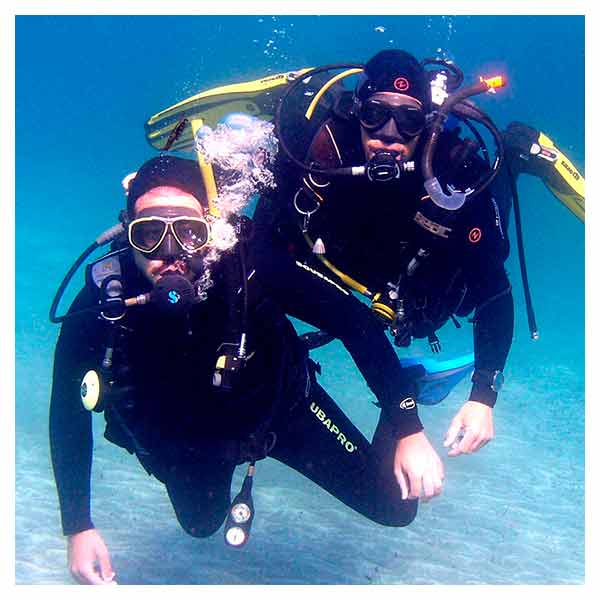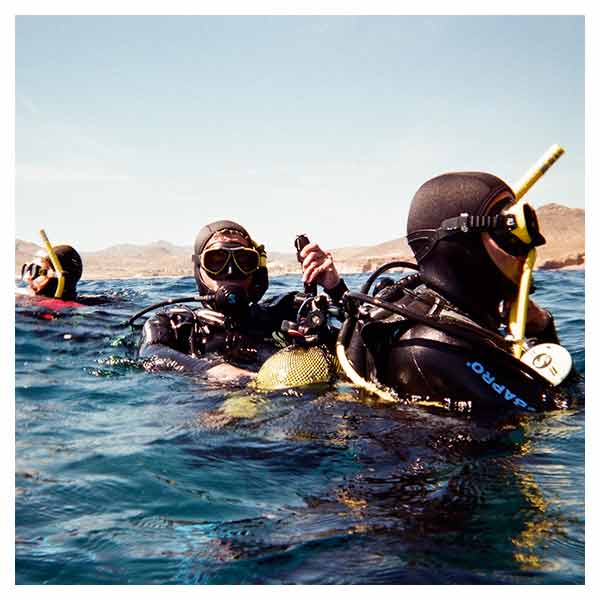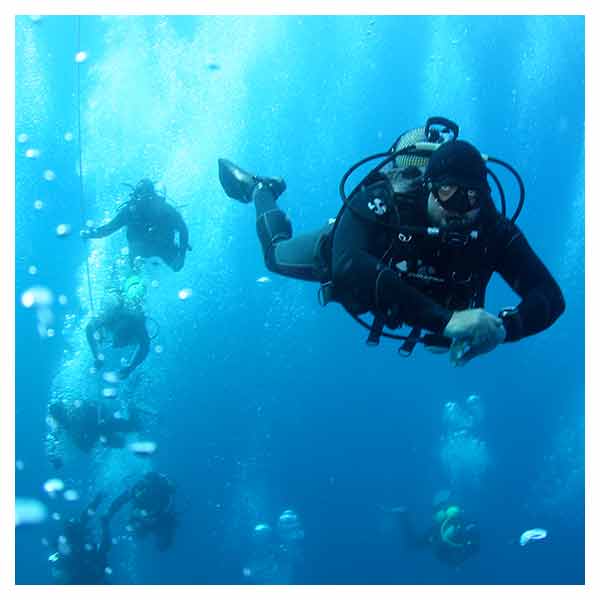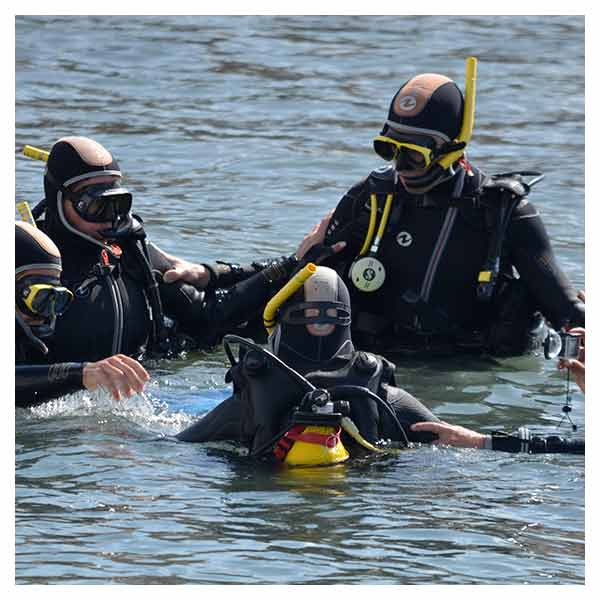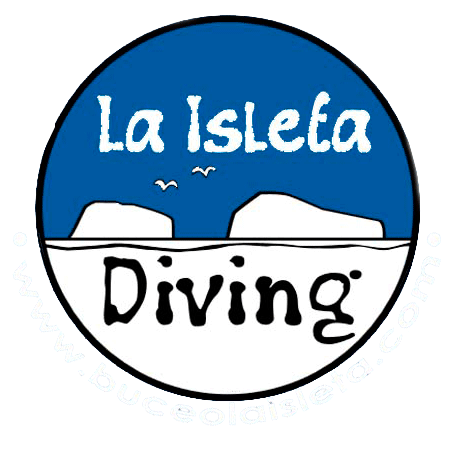
La Isleta Diving
Other courses.

DESA
Objective: Learn how to use a Semiautomatic External defibrillator (SAED)
Requirements: Basic life support training with CPR training (cardiopulmonary reanimation).
Overview: Study supported by learning material (book or digital format) and with a training SAED.
Four hour programme. Practical study with a manikin.
OXYGENATION
Objective: Learn the use of oxygenation equipments in dive emergencies.
Requirements: Recommended training in Basic Life Support with CPR (cardiopulmonary reanimation)
Overview: Individualised study with DAN material. With a manual and support DVD, class review before practical exercises. Written test. Five hour course.
Practical Part: Diving accident simulations and exercises where the safety protocols advise use of oxygenation equipment.
SEA LIFE INJURIES
Objective: Knowledge and identification of potentially dangerous organisms; prevention and action in accidents relating to sea life.
Requirements: Recommended training in Basic Life Support with CPR (cardiopulmonary reanimation).
Overview: Theoretical module about marine organisms that can provoke serious injuries to divers or in other sea activities. Manual and support DVD. Four hour programme.
Practical Part: Practical exercises on reacting to stings, bites and intoxications produced by live organisms.
DFR
Objective: To reach, in a unified manner, the dexterity and knowledge need for the SAED, Oxygenation, Advanced Oxygenation and Sea Life Injuries courses. Requirements: Basic life support training with CPR (cardiopulmonary reanimation).
Overview: Conjoined study of the previous four courses.
Practical part: The practical parts of the referred courses.
BASIC LIFE SUPPORT (BLS)
Objective: To learn the techniques of Basic Life Support in victims with life threatening injuries, whilst waiting for the local medical services to take over.
Overview: Recommended training in First Aid. DAN learning material is included on paper or in digital format. Four hour course.
Theory: Basic notions of human anatomy and physiology. Action protocols. Activating the emergency services.
Practical Part: Emergency breathing, thoracic compressions, haemorrhage control, Heimlich manoeuvrer, safety positions...



